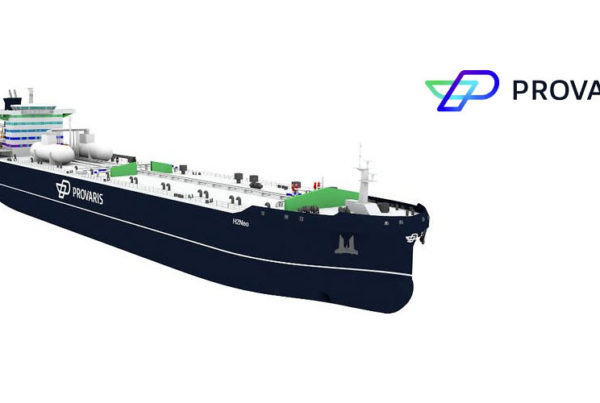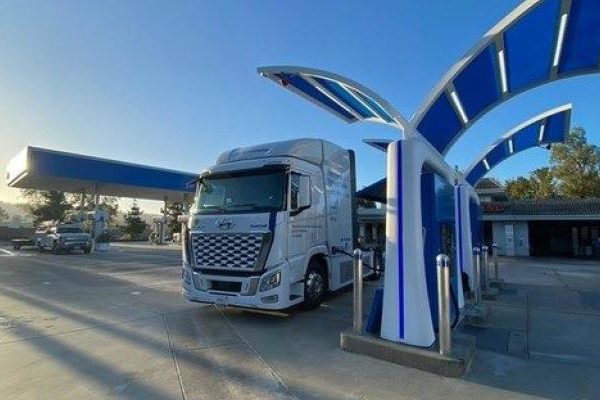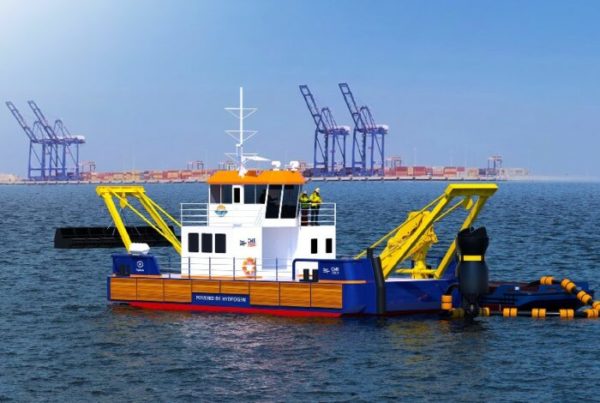
In mid-July, two employees of a Bosch factory in Stuttgart.
The largest economy in Europe, which will need to import up to 70% of its requirements, mentions the future hydrogen pipeline between Barcelona and Marseille in its new roadmap.
The biggest economic and industrial power in Europe has a new roadmap for green hydrogen. The German government has revealed its plan this Wednesday to ensure that its powerful manufacturing sector can transition from its current dependence on fossil fuels (especially natural gas) to a future where this promising energy vector, upon which many hopes for decarbonization in the Old Continent are placed, covers a large part of its needs. And it points to the future hydrogen pipeline between Barcelona and Marseille (H2Med or Barmar) as one of the key infrastructures to channel the huge imports it will require in the coming decades.
In the short term, for reasons of ease and geographical proximity, Berlin has two “priority” corridors to deliver renewable hydrogen: one from the North Sea – where Europe is planning one of its two largest energy poles in the coming years – and the second will be in Spain and Portugal – and one from the Baltic. However, the document explicitly points to two other future connections: the aforementioned H2Med, which will cross all of France, and the so-called “southern corridor,” which will link Italy and Austria with Germany.
The German authorities view these last two infrastructures not only as an alternative to bring this renewable gas from the Iberian Peninsula, where the production costs of green hydrogen are much lower due to the availability of cheap photovoltaic energy but also as a gateway from North Africa.
Although initially, the German authorities believe that most of the imports will arrive by ship, the operation of H2Med will offer a more economical transportation alternative. For the success of this infrastructure, partially financed with community funds, it is crucial that Germany first realizes the 1,800 kilometers of internal hydrogen pipelines projected for the end of this decade.
Even in the most favorable scenario of launching electrolyzers (machines in which green electricity and water are transformed into hydrogen) on German soil, this country will have to import between 50% and 70% of what is required to meet its domestic demand in 2030: between 95 and 130 terawatt-hours (TWh) annually, according to figures from the coalition government (Social Democrats, Greens, and Liberals) led by Olaf Scholz.
“Covering all [renewable hydrogen] demand with domestic production does not make economic sense,” reads the official document published this Wednesday. “We are a densely populated country and we need space for wind and photovoltaics to produce this hydrogen,” adds Philipp Heilmaier, a researcher at the German energy agency, in statements to Reuters.
The main destination for the green hydrogen that Germany will import in the coming years will be crucial for decarbonizing industrials processes that are difficult to electrify, such as steelmaking and chemistry, where heat requirements are enormous.
This Wednesday, during the analysts’ conference following the presentation of Enagás’ results, the CEO of the Spanish gas system operator, Arturo Gonzalo, emphasized that “the infrastructures [for transportation] should always be paid by those who benefit from them,” implicitly referring to Germany and the other countries in the center and north of the EU, who are most interested in the success of H2Med. Between 30% and 50% of the investment will be covered, according to their estimates, with European funds. So, the battle will be to determine who contributes the rest.
“Whatever the European subsidies do not cover, the final beneficiaries will have to cover. In the case of our international interconnection infrastructures, the major consumers of green hydrogen in the industrial heart of Europe, and significantly, the German industry,” added the CEO of Enagás, one of the companies with the most at stake in the hydrogen pipeline project between Barcelona and Marseille. “That’s why we are giving these projects a strong dimension in Germany and why we will present H2Med in Berlin in October, at an event with a broad presence of various hydrogen value chain actors, including the German government, which is clearly promoting this project.”
SOURCE: elpais.com
Read the most up to date Fuel Cell and Hydrogen Industry news at FuelCellsWorks




